Last year Becca was sitting at a table for a women’s Bible study and a friend mentioned that her husband was in Texas checking on his bee hives. She commented that we’d love to have bees one day, but knew they’re in heavy demand. But if he ever needed a place to house a few of his hives we’d be interested.
A week later we got a phone call and her husband, Adam, confirmed that he’d house four of his hives on our property. We were thrilled. We provided the land, he provided the bees, bee keeping and gave us free honey at the end of the season.
But it’s not all about the honey. Approximately one-third of the food we eat is dependent on bees for pollination. Without this indispensable service, there would be no apples, blueberries, cucumbers, watermelon or many of your favorite fruits, vegetables, nuts and seeds. In short, the honeybee is the gardeners’ best friend.
This year Adam didn’t have enough hives to house any on our property. But after a conversation over burgers, he generously offered to help us get set up with our own bees.
And two days later he arrived with two ‘nucs’ or nucleus hives he had picked up for us in Stillwater.
Becca that it is good to start with two hives so we could more easily compare the health of each hive, make sure we were doing things right. Adam brought out the nuc’s about one week prior to transferring them into hives. This would give them time to acclimate to their surroundings. Bees are very sensitive to direction and location, so its important not to move them more than necessary.
We selected a place that is relatively sheltered but still gets plenty of sunlight because that is what gets them active in the morning. They will fly up to four miles in search of pollen, so it doesn’t matter where on the property we put them, they’d find our apple trees.
One week later Adam came back and helped us get all set up with real hives.
A hive consists of a wooden box filled with frames that the bees fill with either honey or brood (eggs). The small opening at the bottom allows bees to come and go.
Frames are simply starter comb that the bees will build from. The are designed for easy removal and inspection by the beekeeper to make sure the colony stays healthy as it grows.
Before moving the bees into their new home, we had to fill a frame-sized bucket with sugar syrup. This gives the bees an initial food source until they can find new ones in the wild.
Now that the hives were set up, we all suited up and got ready to move the bees and Adam got his smoker ready. Throughout the transfer, Adam puffed the smoker over the frames and around hive entrances. The smoke has the effect of calming the bees down, making it easier to work.
The nuc’s each come with two frames. We placed these in the hive closest to the syrup bin. Then added empty frames for the bees to grow into.
The last thing that Adam did, which really impressed me, was say a prayer over the hives and the land that the bees would be tending. It was a good reminder that we are all in this together. We are all working towards the same goal of healthy food and stewardship of God’s creation.
So that’s how you start a beehive. From here on out, the bees continue to multiply, laying up to 2,000 eggs per day. Once all the frames in the box are full, we add another box atop the first with more empty frames. After the second box is full we start adding additional boxes called “supers” that contain only honey. For the rest of the summer they will produce honey in these supers — as much as 100 pounds — which we will harvest at the end of the season.
PS- Nobody got stung!







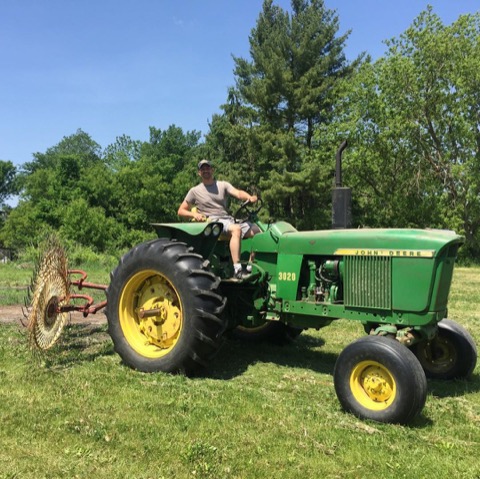
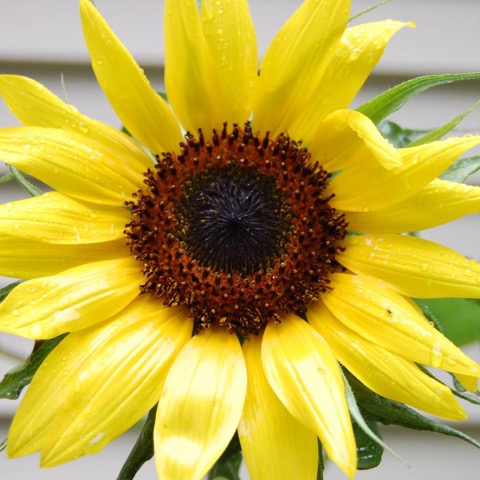

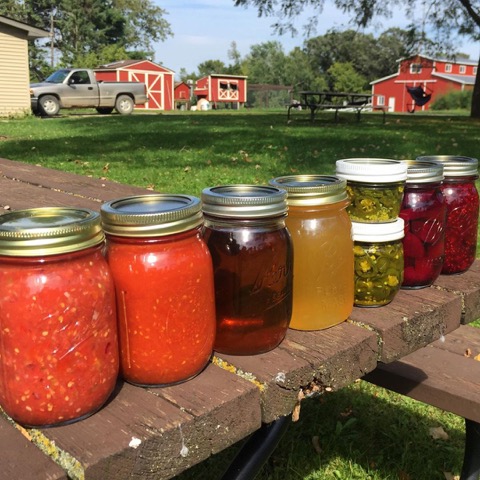
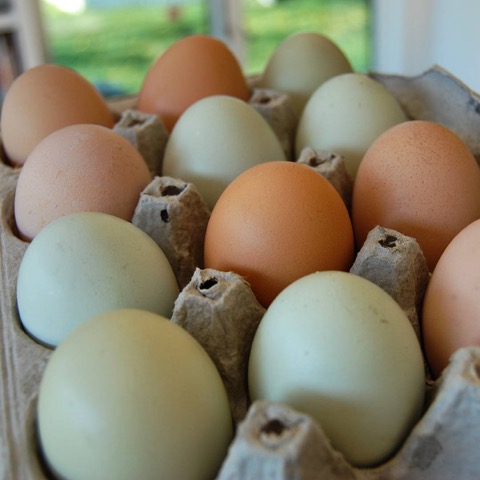

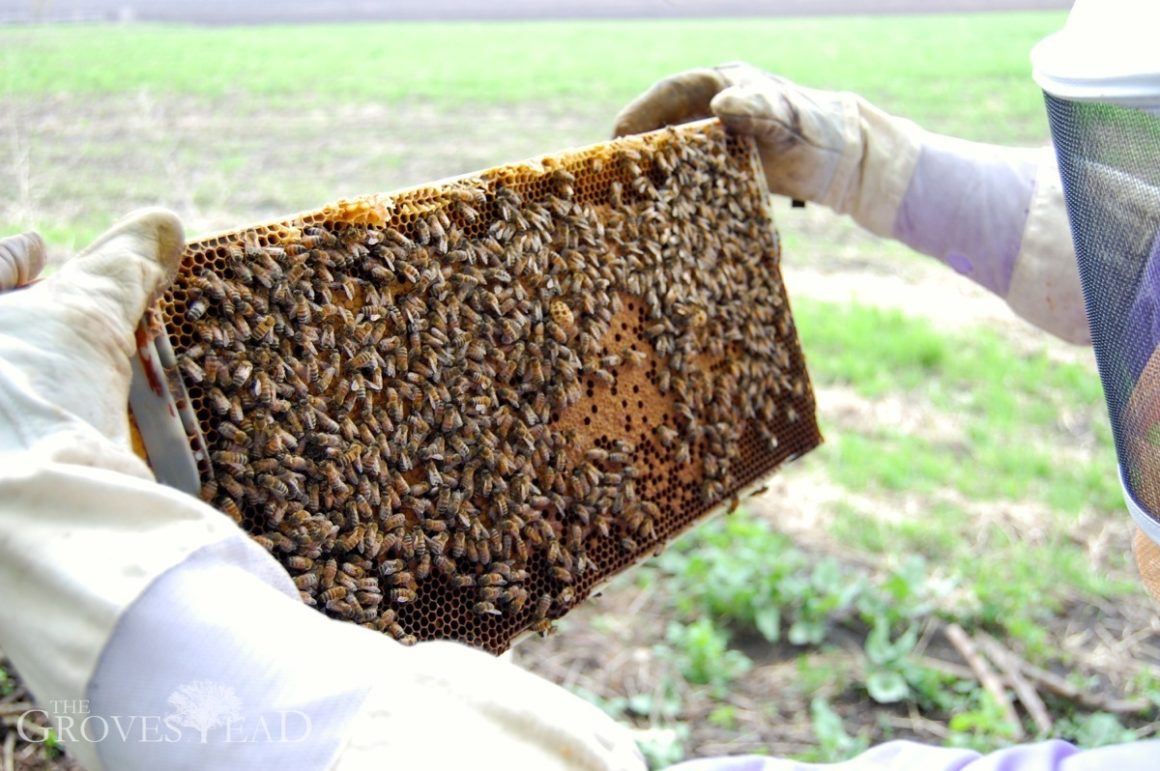
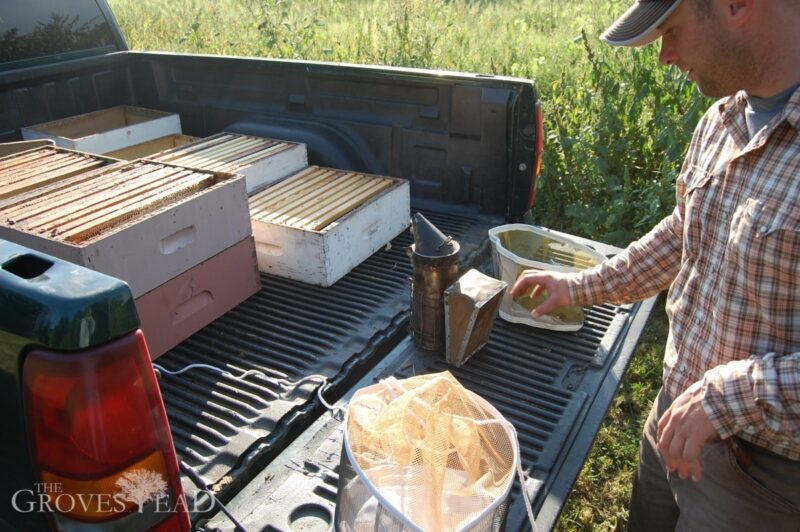
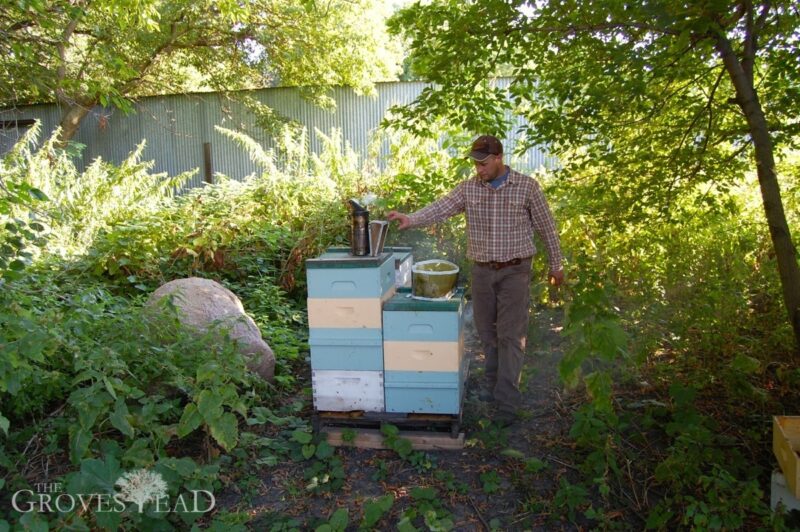
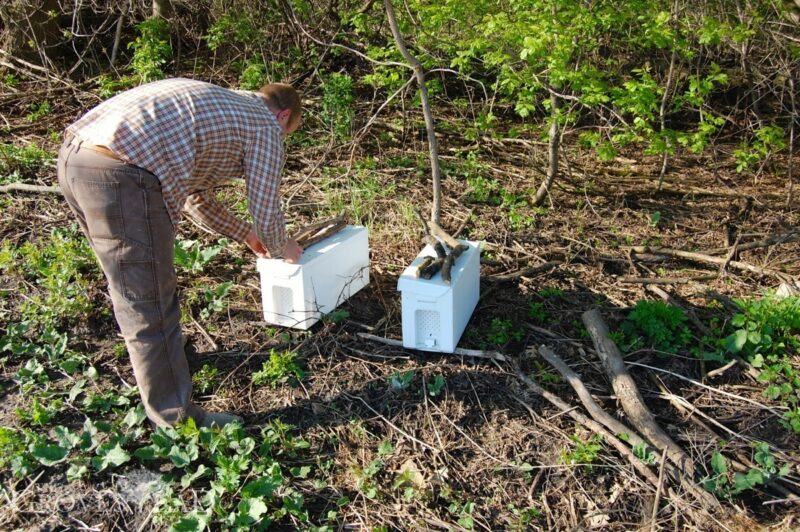
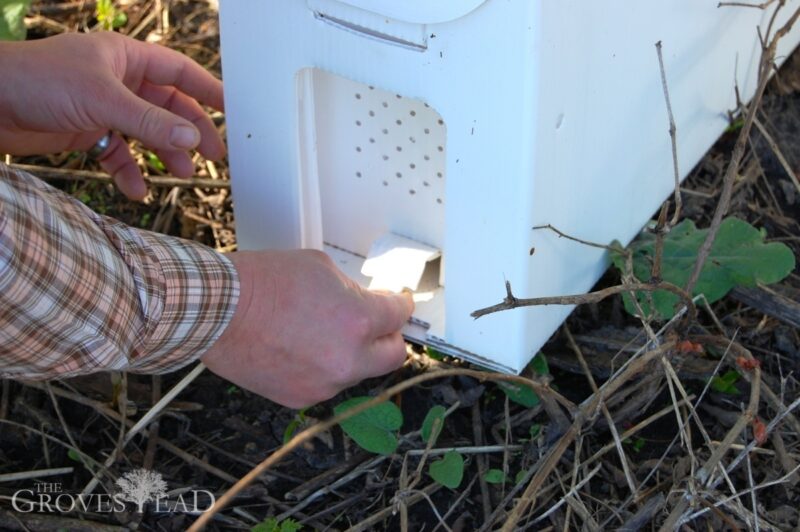
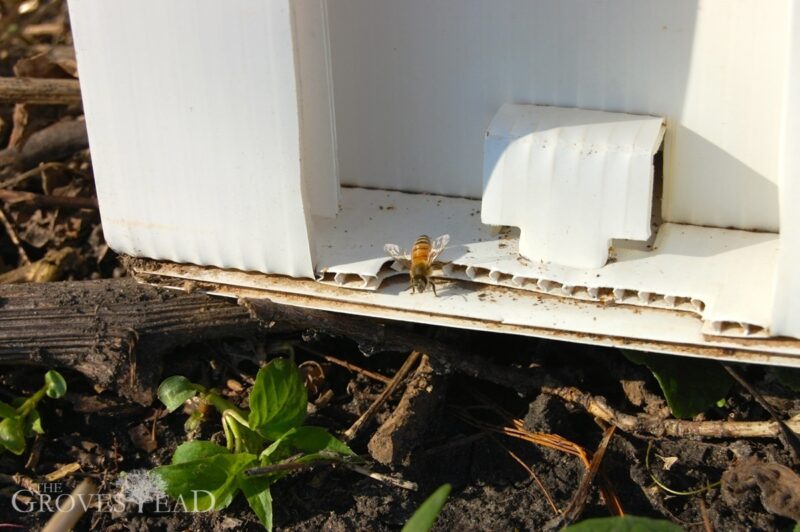
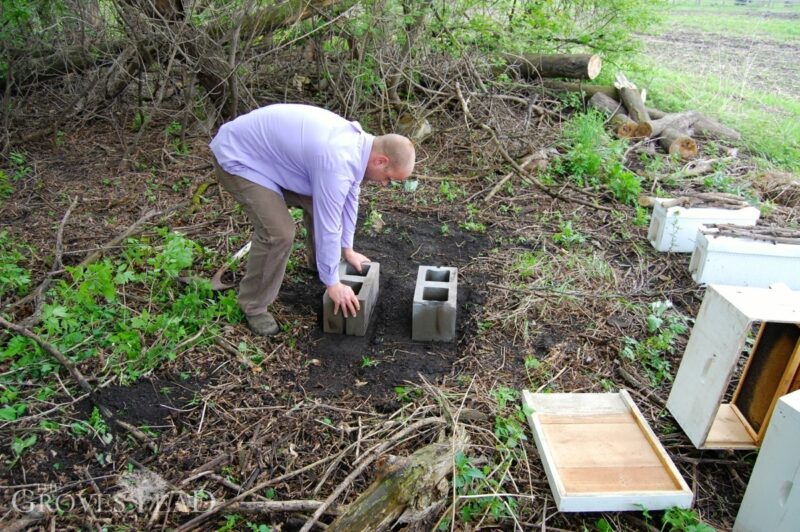
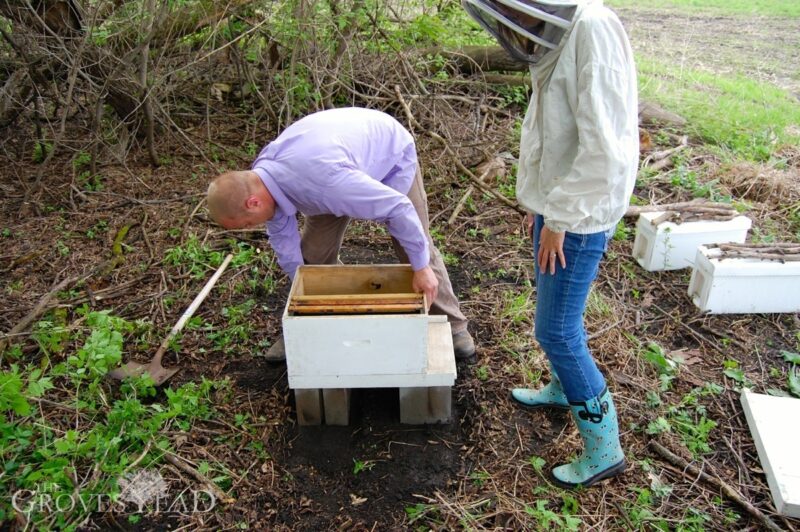
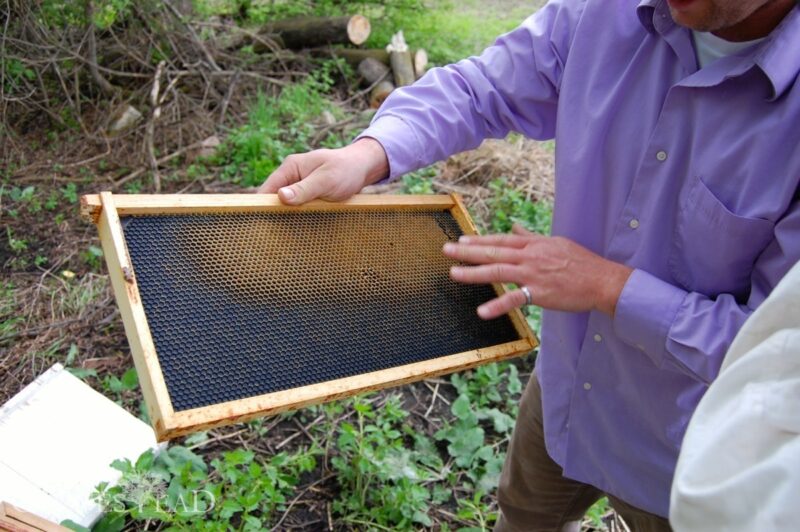
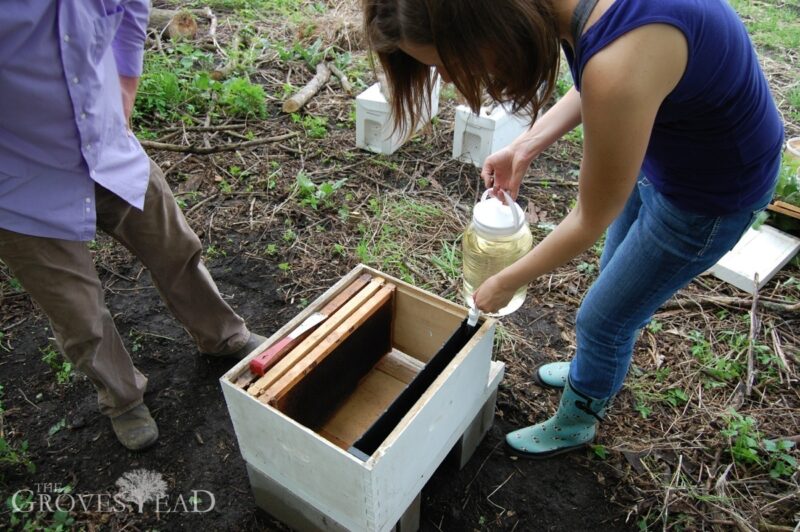
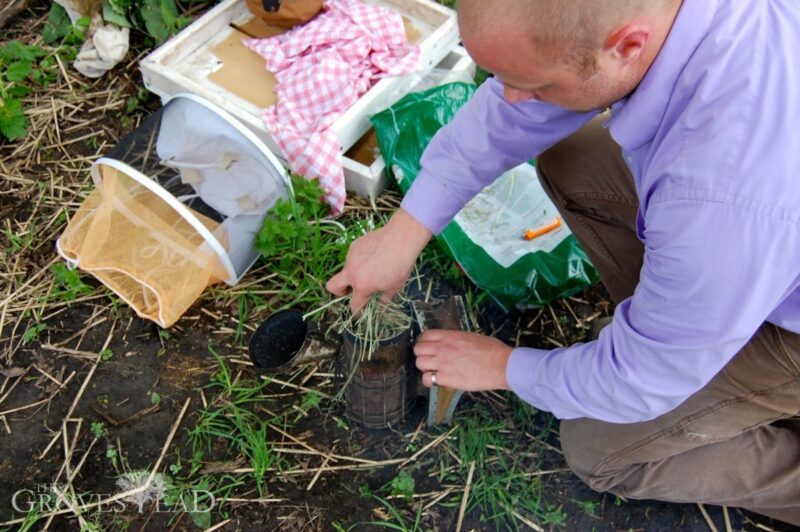
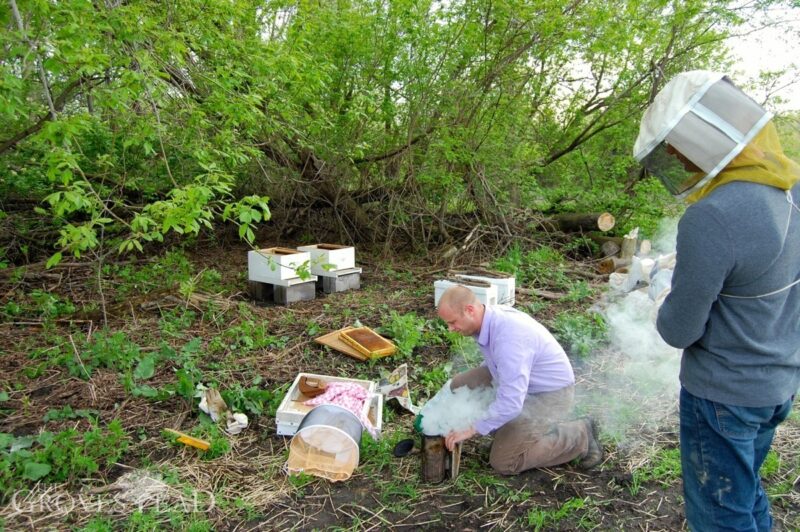
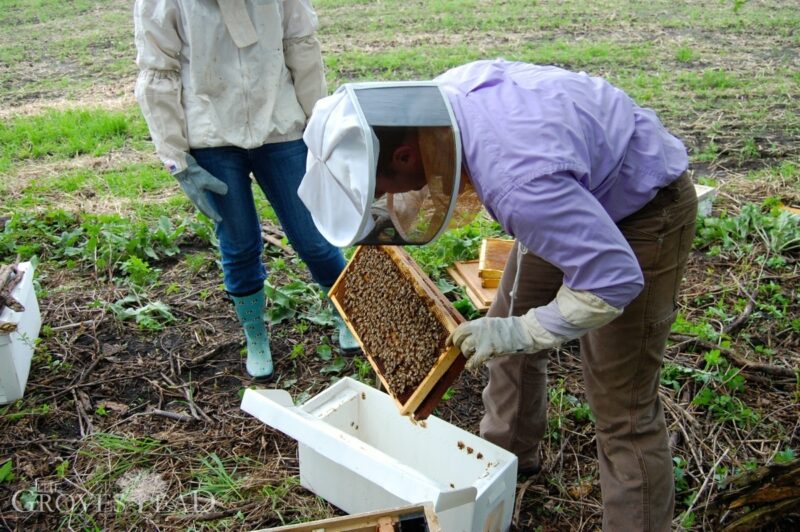
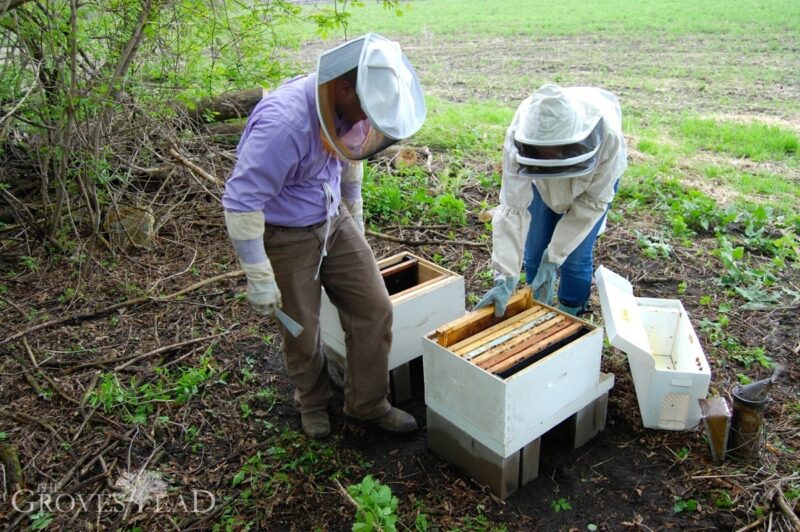
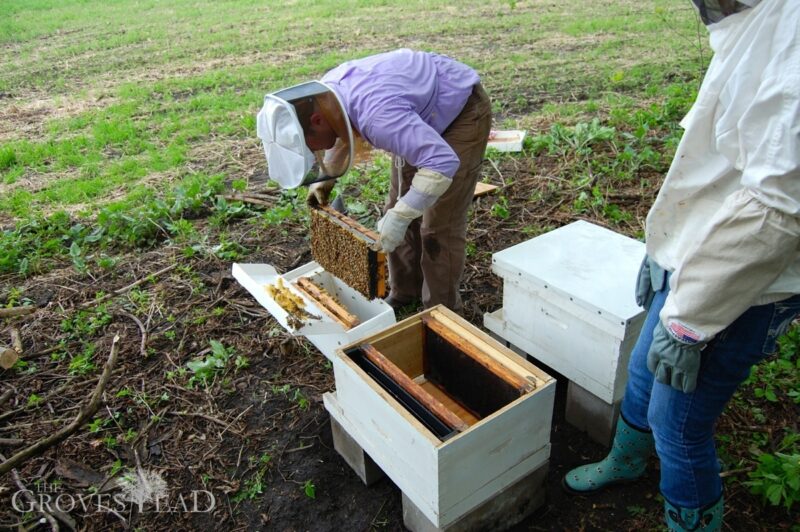
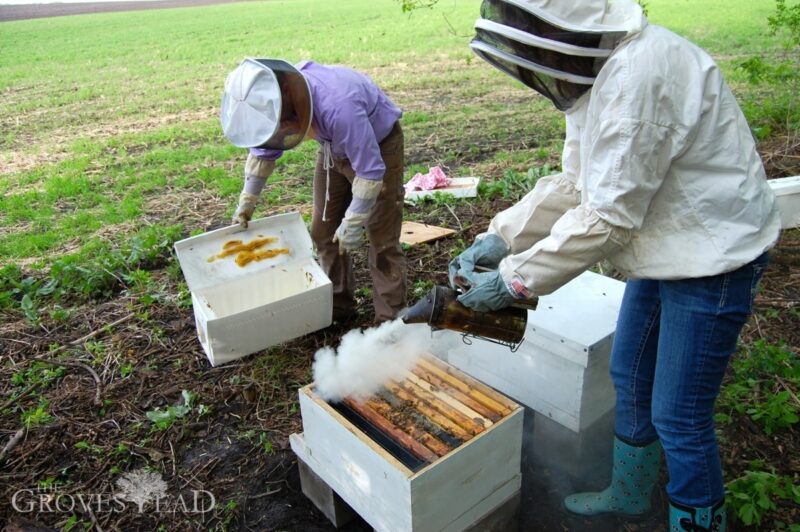
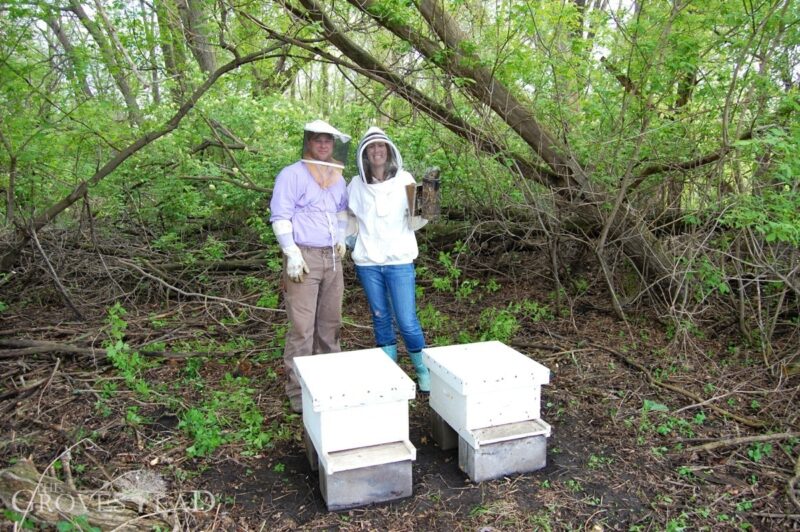
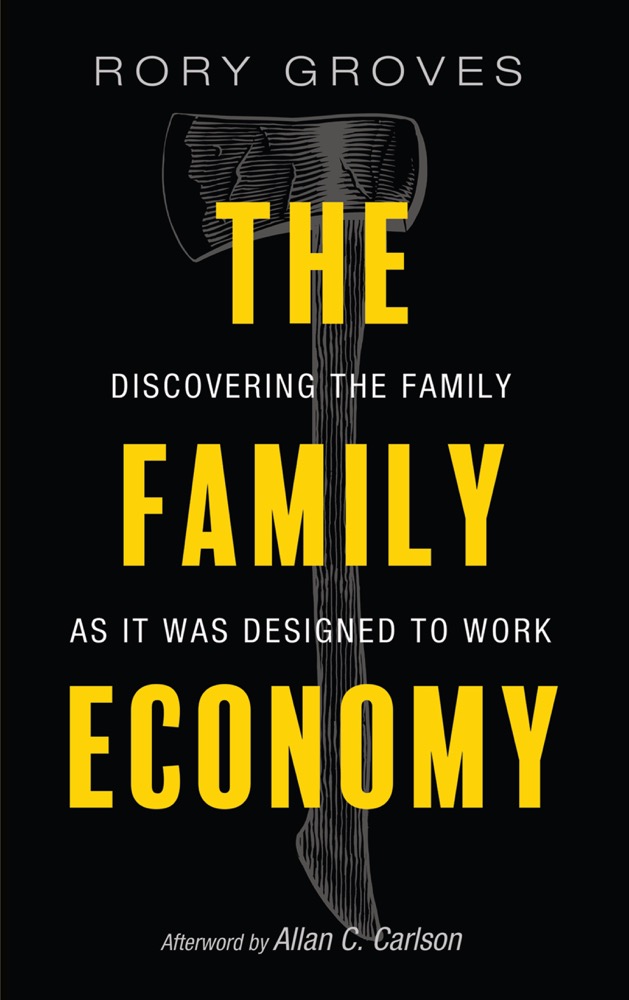
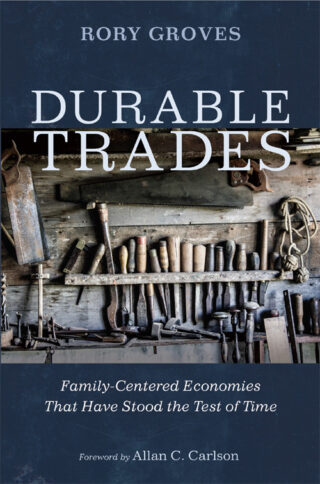
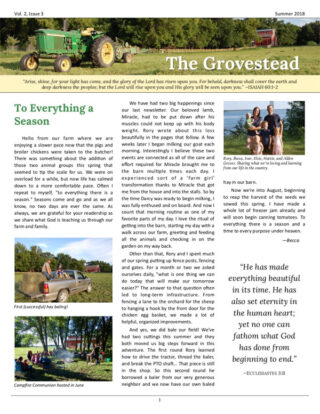
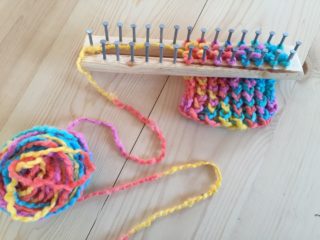
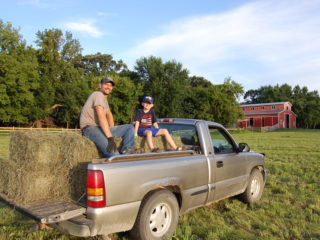
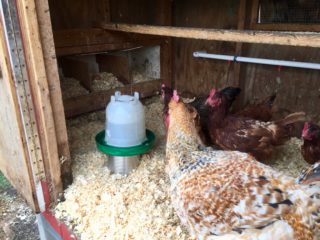
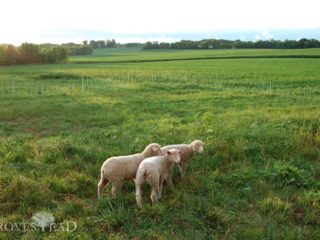
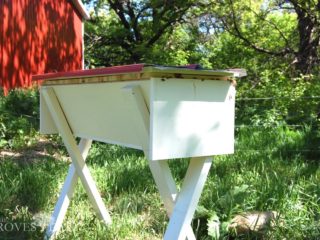
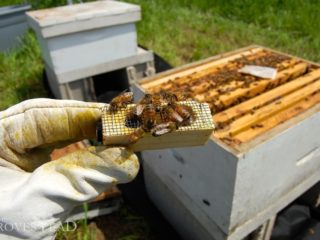
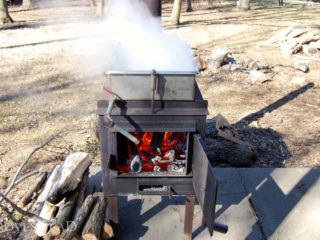
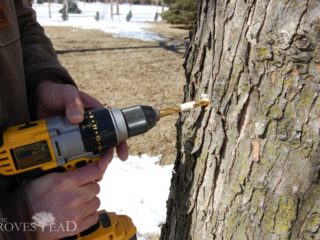
2 comments